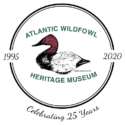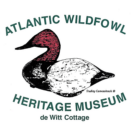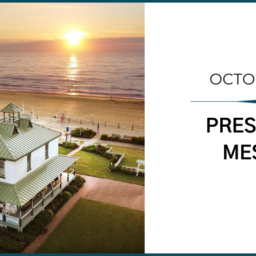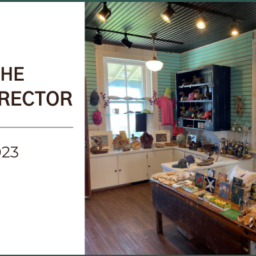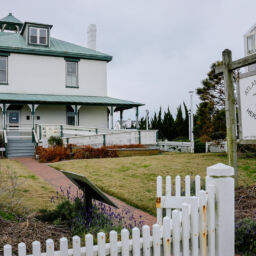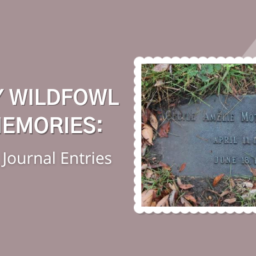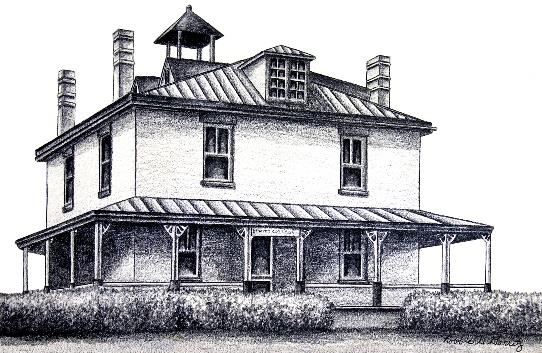
The de Witt Cottage, listed in the National Register of Historic Places, was built in 1895 by Bernard P. Holland, the Town of Virginia Beach’s first postmaster and mayor, for his bride as a year round home. It is the oldest remaining structure on the City’s oceanfront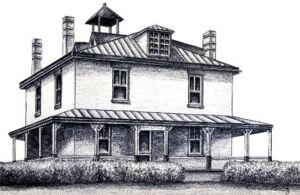 built during the City’s initial development period. It still has its integrity of location, design and workmanship. The oceanfront’s first significant development period was between its foundation in 1883 and its incorporation as the Town of Virginia Beach in 1906. Mrs. Holland did not like the sound of the pounding surf nor was she fond of the cottage’s “small” size. She asked her husband to relocate. He built a new and larger home directly across what is now Atlantic Avenue. They subsequently sold the Cottage to the de Witt family in 1909. The de Witts moved into their new home that same year. Cornelius de Witt, a Norfolk banker and cotton broker, initially intended for the property to be a summer home, but his wife, Cecile, had other ideas. They settled into the home on a permanent basis and eventually raised ten children at the Cottage. During their stay, family members would affectionately refer to the Cottage as “Wittensand”, or “white sand”. When Cornelius bought the home, he also bought a block of land across the street. He kept 200 chickens, 2 cows and numerous rabbit hutches. They also maintained vegetable gardens for each child on his tract of land. That lot, now vacant, was where the Raven Restaurant once was located.
built during the City’s initial development period. It still has its integrity of location, design and workmanship. The oceanfront’s first significant development period was between its foundation in 1883 and its incorporation as the Town of Virginia Beach in 1906. Mrs. Holland did not like the sound of the pounding surf nor was she fond of the cottage’s “small” size. She asked her husband to relocate. He built a new and larger home directly across what is now Atlantic Avenue. They subsequently sold the Cottage to the de Witt family in 1909. The de Witts moved into their new home that same year. Cornelius de Witt, a Norfolk banker and cotton broker, initially intended for the property to be a summer home, but his wife, Cecile, had other ideas. They settled into the home on a permanent basis and eventually raised ten children at the Cottage. During their stay, family members would affectionately refer to the Cottage as “Wittensand”, or “white sand”. When Cornelius bought the home, he also bought a block of land across the street. He kept 200 chickens, 2 cows and numerous rabbit hutches. They also maintained vegetable gardens for each child on his tract of land. That lot, now vacant, was where the Raven Restaurant once was located.
Mr. de Witt died in 1913 and his wife died in 1923. When the mother passed, the oldest daughter, who was twenty-two years old at the time, assumed the chores of parenting. Most of the children came and went as the years passed, but Julia, Harriet and Katrine lived in their childhood home until the Cottage was purchased from the de Witt Family in 1988. With the older children “in charge”, the elder daughters operated the Cottage as a guesthouse during the Great Depression. Boarders, who were frequently friends and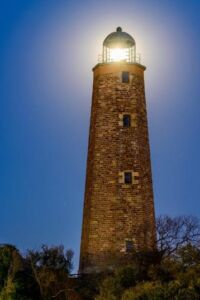 acquaintances of the de Witts, were accepted on a limited basis in the early years. They typically paid $7 a week or $1.50 a day to live in the Cottage. The de Witt Cottage became a popular place to stay and remained so until the 1970s and was among the last to represent the grand old oceanfront cottages – a testament to a bygone age and vanished way of life. The de Witt Cottage is the oldest standing oceanfront cottage in the City and second oldest oceanfront structure. Only the Cape Henry Lighthouse is an older oceanfront structure.
acquaintances of the de Witts, were accepted on a limited basis in the early years. They typically paid $7 a week or $1.50 a day to live in the Cottage. The de Witt Cottage became a popular place to stay and remained so until the 1970s and was among the last to represent the grand old oceanfront cottages – a testament to a bygone age and vanished way of life. The de Witt Cottage is the oldest standing oceanfront cottage in the City and second oldest oceanfront structure. Only the Cape Henry Lighthouse is an older oceanfront structure.
In mid-1987, the elder daughters who were living in the home, put the Cottage up for sale. Fortunately for the larger community of Virginia Beach, the house was not purchased by a private corporation, leveled, and the oceanfront lot commercially “re-designed”. Wanting to preserve part of its early history and example of heritage, the City, with the fundraising efforts of the Virginia Beach Foundation, entered into negotiations with the family and subsequently purchased the Cottage. Purchased under the condition that the Cottage would be perpetually called the de Witt Cottage, the City began a two year effort to restore the home to its turn-of-the-century appearance and material condition befitting its historical significance.
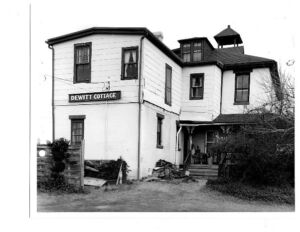 The restoration of the Victorian era structure on the Virginia Beach oceanfront was a unique public-private venture between the de Witt family, the City of Virginia Beach, the Back Bay Wildfowl Guild, the Princess Anne Garden Club and the Virginia Beach Foundation. The late Victorian architecture, original wood paneling, spacious attic and basement, coal burning furnace and open cupola on the roof are some of the many features that typify the cottages built along the beach-front during the resort’s early years. Interestingly, Mr. Holland, the first owner, was an avid wildfowl hunter and would use the cupola as a lookout for ducks and geese on Lake Holly (one block west of the Cottage).
The restoration of the Victorian era structure on the Virginia Beach oceanfront was a unique public-private venture between the de Witt family, the City of Virginia Beach, the Back Bay Wildfowl Guild, the Princess Anne Garden Club and the Virginia Beach Foundation. The late Victorian architecture, original wood paneling, spacious attic and basement, coal burning furnace and open cupola on the roof are some of the many features that typify the cottages built along the beach-front during the resort’s early years. Interestingly, Mr. Holland, the first owner, was an avid wildfowl hunter and would use the cupola as a lookout for ducks and geese on Lake Holly (one block west of the Cottage).
Restoration efforts began in 1991 and were supplemented by community volunteers. The combined efforts culminated in the restoration of the Cottage to the soundness of earlier days. During the restoration, the Back Bay Wildfowl Guild approached the City’s leadership with its long range goal, a credible way to preserve and promote, perpetuate and exhibit historical wildfowl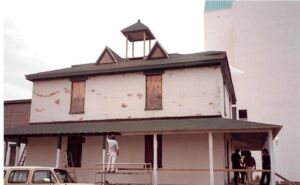 artifacts, the wildfowling history of the region, and actively promote interest in the wildfowling arts. Complementing the City’s goal of converting the Cottage into a resort area cultural and education center, a lease agreement was established between the City and the Guild, that resulted in the establishment of the Atlantic Wildfowl Heritage Museum in 1995. By its occupancy of the Cottage, the Museum adopted a second mission which also complements the City’s goal: the Museum adds a very important site to the City’s efforts to preserve the early history of Virginia Beach.
artifacts, the wildfowling history of the region, and actively promote interest in the wildfowling arts. Complementing the City’s goal of converting the Cottage into a resort area cultural and education center, a lease agreement was established between the City and the Guild, that resulted in the establishment of the Atlantic Wildfowl Heritage Museum in 1995. By its occupancy of the Cottage, the Museum adopted a second mission which also complements the City’s goal: the Museum adds a very important site to the City’s efforts to preserve the early history of Virginia Beach.
Today, inside the Museum, the visitor will view examples representing the evolution of the art of decoy carving using primitive tools to more elaborate and expressive contemporary carvings and art work of today. Memorabilia of the old hunt clubs can be viewed throughout the Museum and provides an opportunity for both memory and education. The museum has an excellent variety of original oil and watercolor paintings along with its award winning contemporary carvings by nationally known artists. On the second floor, the Edgar T. Brown Virginia Beach Yesterday Gallery is a photo and artifact gallery documenting some of early Virginia Beach history as a resort. Photos of the de Witt family along with a 1930’s era surfboard made by Buddy Cox for Peter de Witt are located in the upstairs hallway. An art gallery occupies the remainder of the second floor. The Museum’s exhibits are supported by a well-stocked gift shop featuring works by carvers and artists from the local area.
